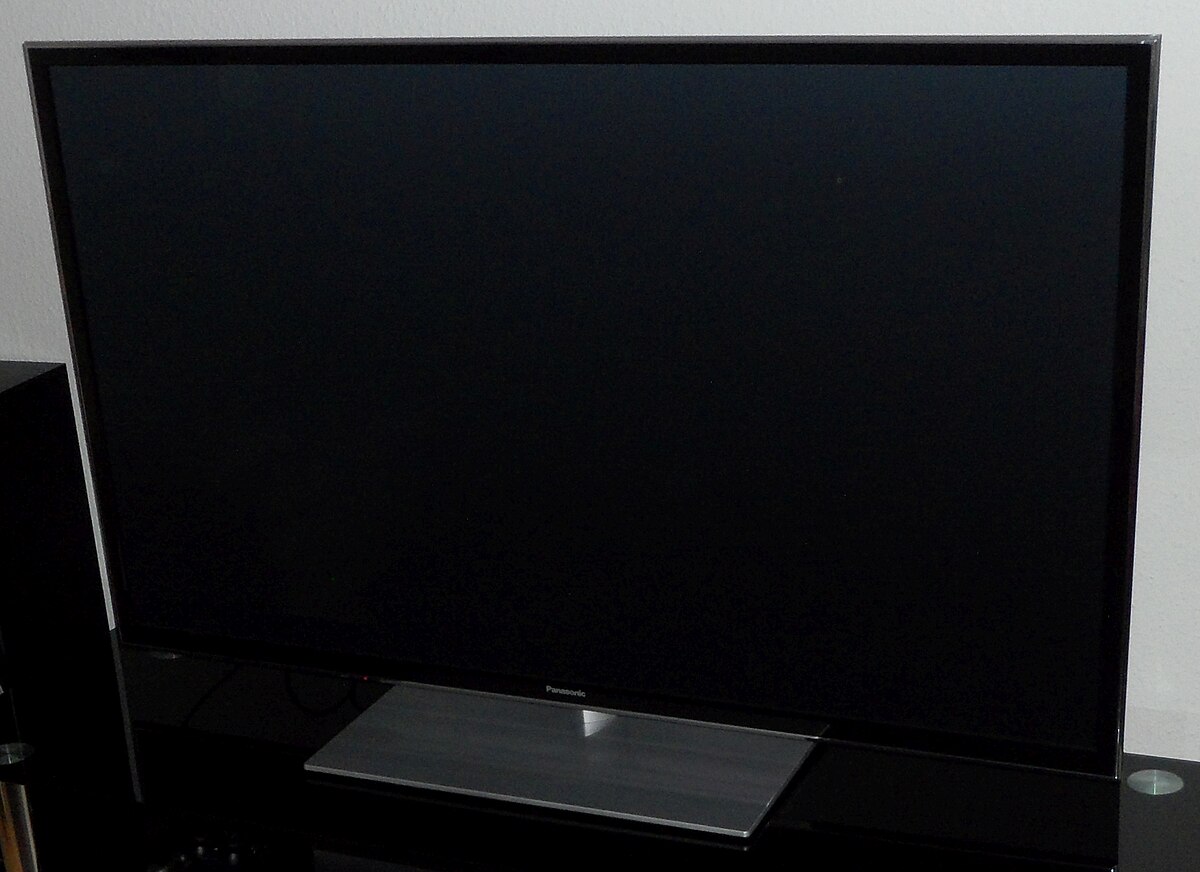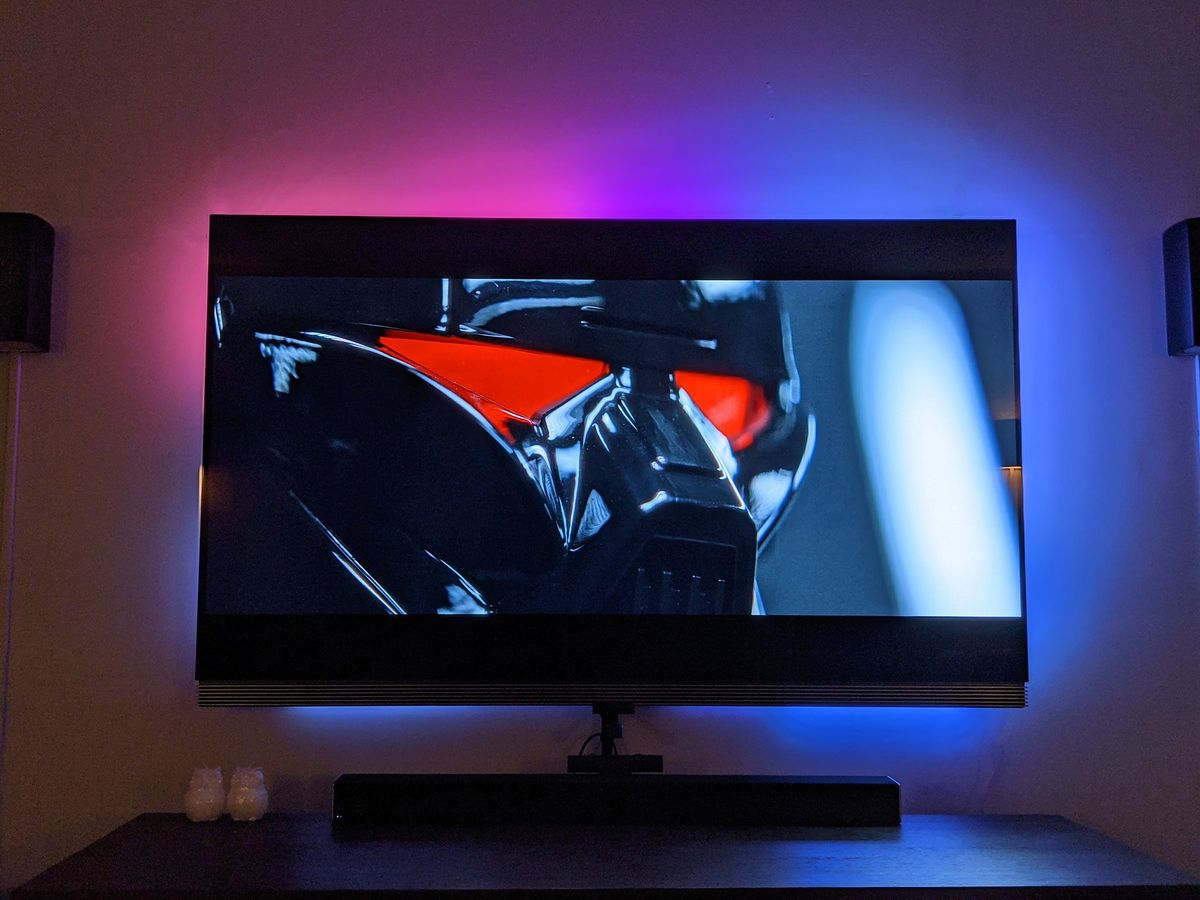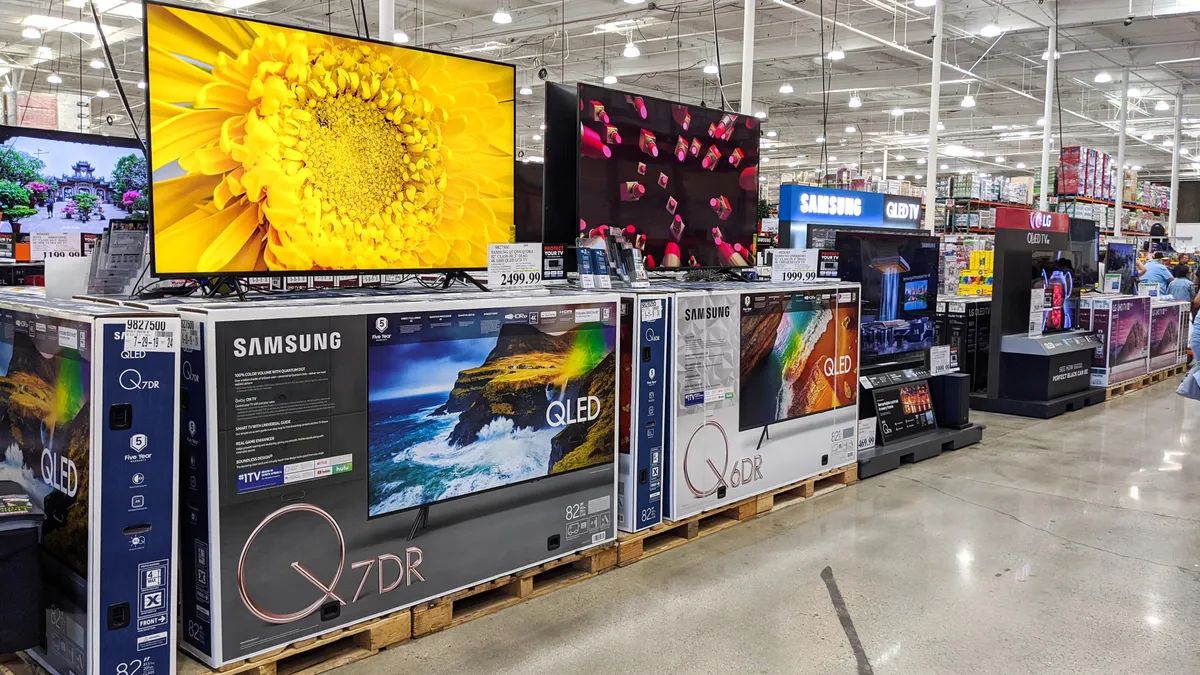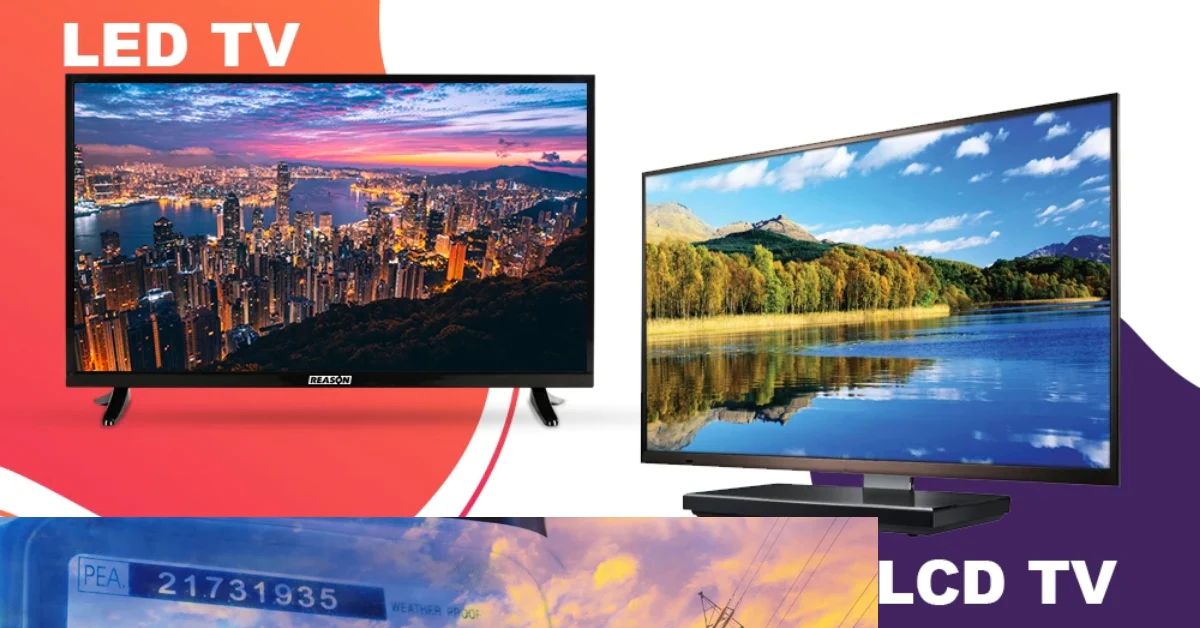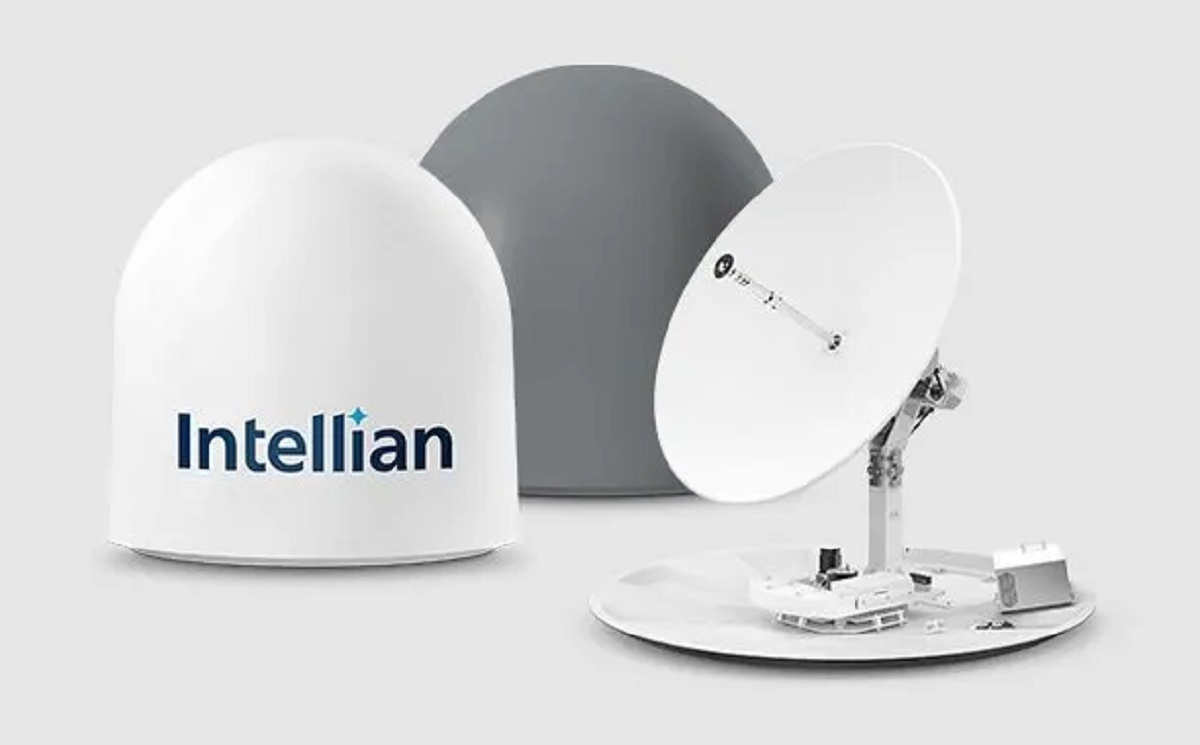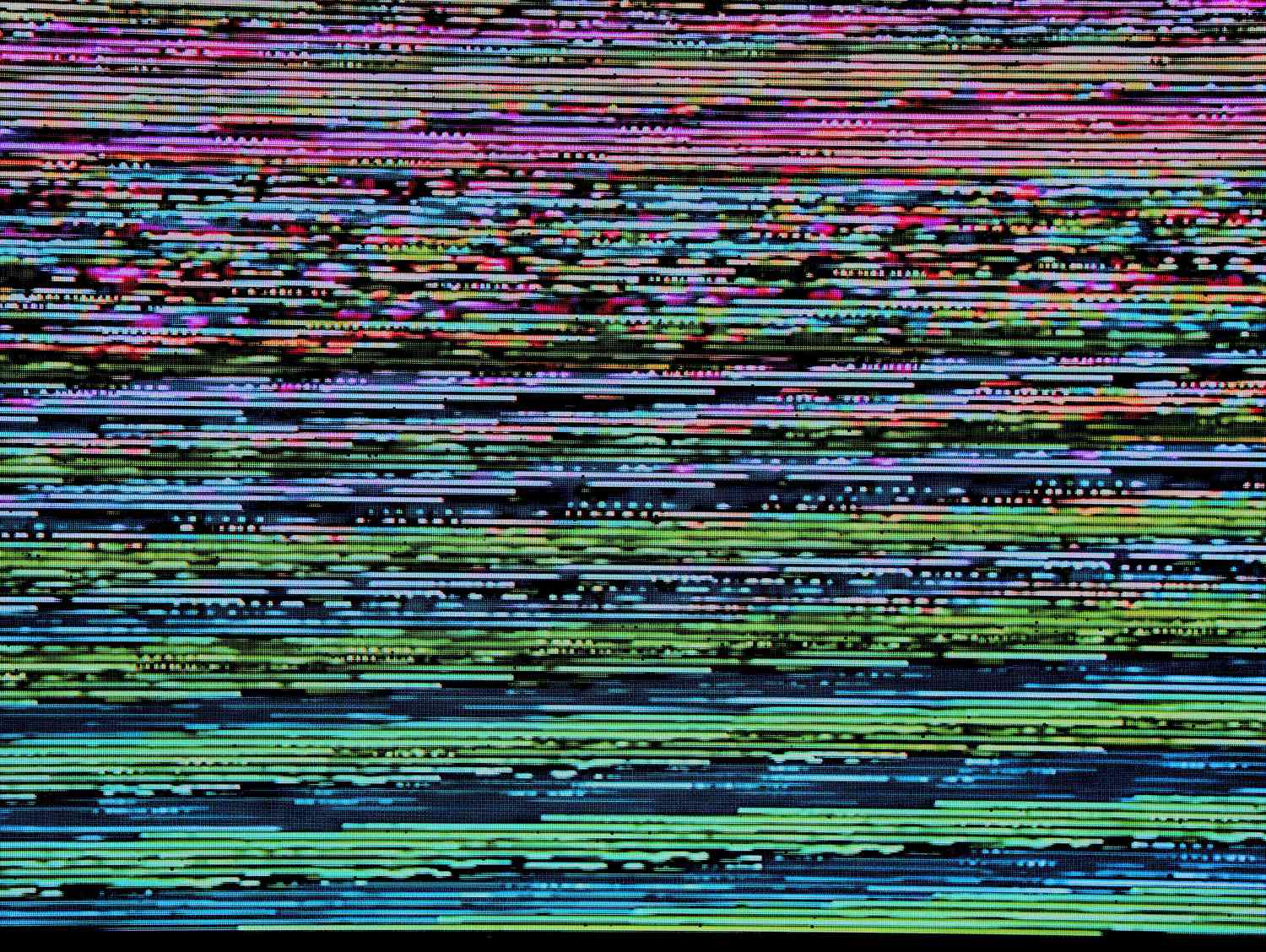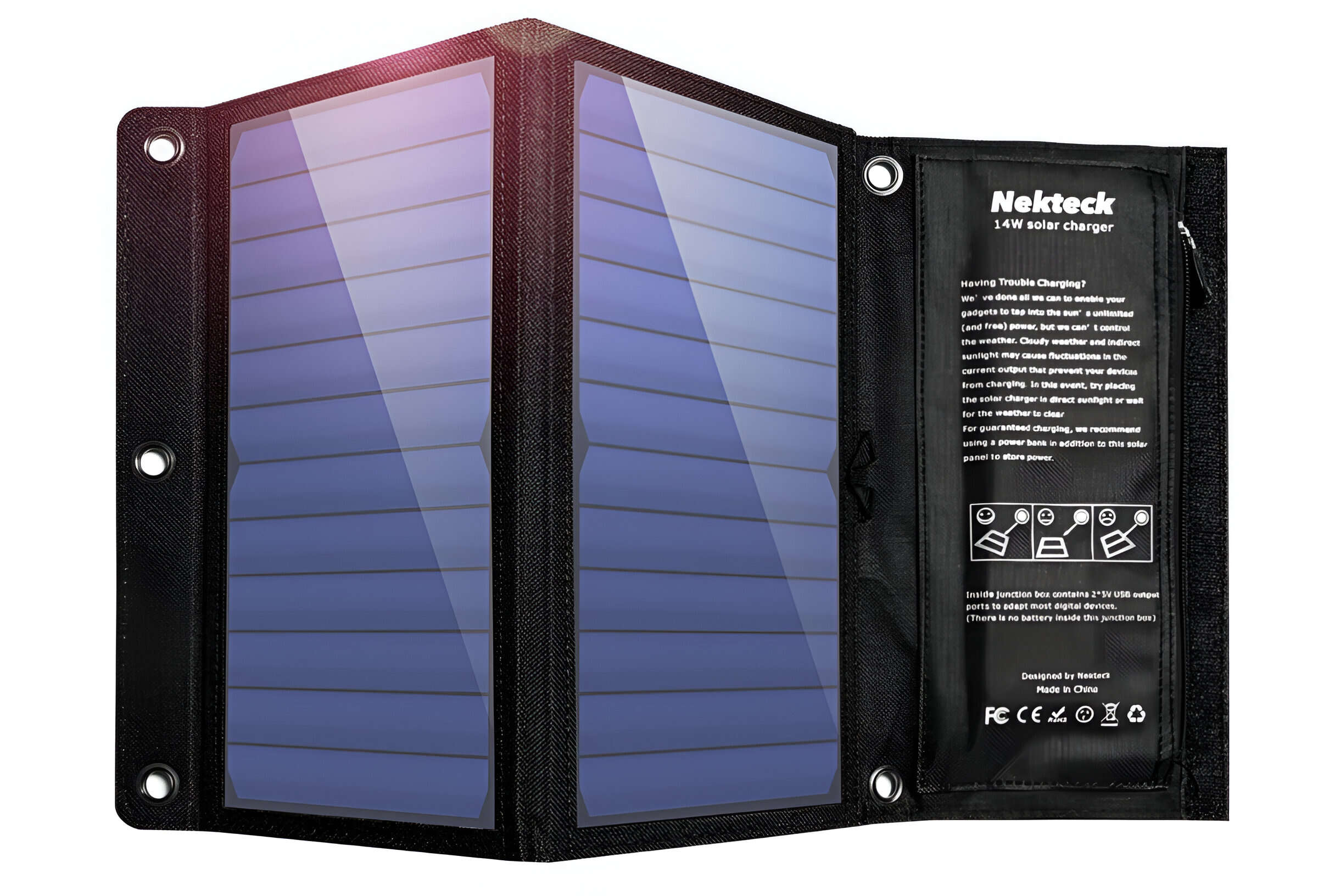Introduction
LED (Light Emitting Diode) TVs have become incredibly popular in recent years, thanks to their superior picture quality and energy efficiency. These slim and sleek televisions are equipped with LED panels that form the basis of their display technology. While LED TV panels are known for their long lifespan, it is natural for consumers to wonder how often they can expect these panels to go bad.
The lifespan of an LED TV panel can vary depending on several factors, including the quality of the panel, usage patterns, operating conditions, and the existence of external factors that can potentially damage the panel. Understanding these factors can help you make informed decisions during the purchase and usage of your LED TV, ensuring you maximize its lifespan while enjoying uninterrupted viewing pleasure.
In this article, we will explore the various factors that can affect the lifespan of LED TV panels and provide tips on how to extend their longevity. By the end, you will have a better understanding of the potential lifespan of your LED TV panel and the steps you can take to ensure it stays in optimal condition for as long as possible.
Factors that affect the lifespan of LED TV panels
When it comes to the longevity of LED TV panels, there are several key factors to consider. Understanding these factors can help you make informed choices when purchasing an LED TV and ensure that you take proper care of it to maximize its lifespan. Let’s take a closer look at these factors:
1. Quality of the TV panel: The quality of the LED TV panel plays a significant role in its lifespan. Higher-quality panels are often manufactured with better materials and adhere to stricter quality control standards. Investing in a reputable brand with a proven track record of producing high-quality panels can greatly increase the chances of your TV lasting for a long time.
2. Usage and operating conditions: The way you use your LED TV and the operating conditions it is subjected to can have a major impact on its lifespan. Continuous usage for prolonged periods, excessive brightness levels, and frequent power on/off cycles can all contribute to faster panel degradation. Additionally, placing your TV in an area with poor ventilation or extreme temperatures can also affect its longevity.
3. Heat and humidity: LED TV panels are susceptible to heat, and excessive heat can cause damage over time. It is important to ensure that your TV is placed in a well-ventilated area and that airflow around the panel is not obstructed. Similarly, high humidity levels can lead to moisture buildup, which can corrode the internal components of the TV. Maintaining a suitable environment with moderate temperature and humidity levels is crucial.
4. Power surges and voltage fluctuations: Power surges and voltage fluctuations can occur due to storms, faulty electrical systems, or power supply issues. These sudden changes in voltage can damage the sensitive components of your LED TV, including the panel. Using a high-quality voltage regulator or surge protector can help safeguard your TV against these electrical anomalies.
5. Burn-in effect: The burn-in effect occurs when static images are displayed for extended periods on the screen, causing permanent image retention. This can happen if you leave a static image, such as a news ticker, stock market data, or video game dashboard, on the screen for hours on end. OLED panels are more susceptible to burn-in, but LED TV panels can also be affected over time. To prevent this, it is recommended to vary the content displayed and avoid leaving static images on the screen for too long.
By understanding these factors, you can make informed decisions regarding the purchase, placement, and usage of your LED TV. In the next section, we will provide some useful tips to help you extend the lifespan of your LED TV panel.
Quality of the TV panel
The quality of the TV panel is a crucial factor that determines the lifespan of an LED TV. When it comes to panels, there are different tiers of quality, and it’s important to understand the distinctions.
Higher-quality panels are often manufactured using superior materials and advanced technologies, resulting in better picture quality and increased durability. These panels undergo more stringent quality control measures during the manufacturing process, ensuring that only the best units make it to the market.
Investing in a TV with a high-quality panel from a reputable brand can significantly increase the lifespan of your LED TV. Leading manufacturers often have a history of producing reliable and long-lasting panels, backed by warranty and customer support. While the initial cost of such TVs may be higher, they can prove to be a cost-effective choice in the long run.
On the other hand, lower-quality panels may be more affordable but typically have a shorter lifespan. These panels may be made with cheaper materials, which can result in issues such as image retention, color degradation, or even failure of the panel itself. TVs with lower-quality panels may also have limited support and warranty coverage, making them a riskier investment.
When considering the quality of the TV panel, it’s important to do thorough research and read reviews from reliable sources. Look for information about the panel manufacturer, the technologies used, and the overall reputation of the brand. This will help you make an informed decision and choose a TV with a panel that is known for its longevity.
In addition, it’s worth noting that advancements in panel technology are continually being made. If you’re in the market for a new LED TV, consider looking for models that incorporate the latest panel innovations. These advancements can include improvements in color reproduction, contrast ratio, and energy efficiency. By choosing a TV with an advanced panel, you are more likely to enjoy a longer lifespan and a better viewing experience.
To summarize, the quality of the TV panel is a crucial factor that impacts the longevity of an LED TV. Investing in a TV with a high-quality panel from a reputable brand can provide you with better picture quality and increased durability. Spending a bit more upfront can save you from the frustration and cost of premature panel failure.
Usage and operating conditions
How you use your LED TV and the conditions under which it operates can have a significant impact on the lifespan of the TV panel. Here are some factors related to usage and operating conditions that you should be mindful of:
1. Continuous usage and excessive brightness: The duration and frequency of usage can affect the longevity of the LED TV panel. Continuous use for extended periods without giving the panel ample time to cool down can lead to overheating and reduce its lifespan. Additionally, running the TV at excessively high brightness levels can also contribute to panel degradation over time. It’s advisable to give the TV periodic breaks and adjust the brightness to a comfortable level.
2. Power on/off cycles: Frequently turning the TV on and off can put stress on the internal components, including the panel. The sudden surge of power during startup and the subsequent power fluctuations during shutdown can impact the lifespan of the panel. To minimize this stress, it’s recommended to avoid unnecessary power cycling and only turn off the TV when it’s not in use for a significant period.
3. Ventilation and temperature: Adequate airflow around the TV is essential for proper cooling. Placing the TV in a confined space or against a wall can hinder ventilation, leading to increased heat buildup and potential damage to the panel. Similarly, extreme temperatures outside the recommended operating range can negatively impact the panel’s performance and longevity. It’s advisable to position the TV in a well-ventilated area and avoid exposing it to direct sunlight or extreme temperature conditions.
4. Mounting and handling: Improper mounting and handling of the TV can pose risks to the panel’s integrity. If your LED TV is wall-mounted, ensure that the mounting is properly secured and follows the manufacturer’s guidelines. Accidental bumps or drops while handling the TV can also cause damage to the panel. Always be cautious and handle the TV with care to avoid any potential impact on the panel’s lifespan.
5. Gaming and motion-intensive content: Extended periods of gaming or watching motion-intensive content, such as sports or action movies, can put additional strain on the panel. These activities involve fast-moving objects that require the panel to continuously refresh the images. This can lead to increased wear and tear on the panel over time. While occasional gaming or watching such content is not a problem, excessive and prolonged sessions should be avoided to preserve the longevity of the panel.
By being mindful of these usage and operating conditions, you can help extend the lifespan of your LED TV panel. Taking care to avoid excessive usage, adjusting brightness levels, providing proper ventilation, and handling the TV with care will contribute to keeping your LED TV in optimal condition for longer.
Heat and humidity
Heat and humidity are environmental factors that can have a significant impact on the lifespan of your LED TV panel. Excessive heat and high humidity levels can cause damage and affect the performance of the panel. Here are a few points to consider:
1. Temperature: LED TVs are designed to operate within a specific temperature range. Excessive heat can lead to overheating of internal components, including the panel, which can shorten its lifespan. It’s important to keep your TV in a well-ventilated area and avoid placing it near heat sources such as radiators or direct sunlight. Additionally, avoid covering the vents on the TV that facilitate airflow, as this can lead to heat buildup.
2. Ventilation: Proper airflow is essential for keeping your LED TV panel cool. Make sure that there is enough space around the TV to allow air to circulate freely. Avoid placing the TV in enclosed cabinets or cramped spaces that restrict ventilation. Good airflow will help dissipate heat more effectively and protect the panel from overheating.
3. Humidity: High humidity levels can cause moisture to accumulate inside the TV, leading to corrosion of internal components. This can result in malfunctions or the deterioration of the panel over time. It’s important to maintain a suitable humidity level in the room where your TV is located. Using a dehumidifier or an air conditioner can help regulate humidity and protect the panel from moisture-related damage.
4. Climate: The climate in which you live can also influence the temperature and humidity levels in your TV’s environment. Regions with high temperatures and humidity pose a greater risk to the lifespan of the panel. If you reside in a hot and humid climate, it’s crucial to take extra precautions to ensure the longevity of your LED TV. This can include using air conditioning, implementing proper ventilation, and regularly monitoring and controlling the temperature and humidity levels in the room.
By controlling the heat and humidity levels around your LED TV, you can extend the lifespan of the panel. Maintaining suitable temperatures, allowing for proper ventilation, and managing humidity levels within the recommended range will significantly contribute to its longevity.
Power surges and voltage fluctuations
Power surges and voltage fluctuations can occur due to various reasons, such as lightning strikes, faulty wiring, or power grid issues. These electrical anomalies can have damaging effects on your LED TV panel and other internal components. Understanding how to protect your TV from power surges and voltage fluctuations is crucial for maximizing its lifespan.
1. Surge protectors: Using a high-quality surge protector is an effective way to shield your LED TV from sudden voltage spikes. Surge protectors are designed to redirect excess voltage away from your electronic devices, including the TV panel. Look for surge protectors with sufficient joule rating and consider using ones specifically designed for sensitive electronics like televisions.
2. Voltage regulators: Voltage regulators help stabilize the incoming voltage and provide a consistent supply to your LED TV. They can compensate for voltage fluctuations, ensuring that the TV operates within the recommended voltage range. Voltage regulators are especially useful in areas with unreliable power supply or frequent voltage fluctuations.
3. Unplugging during storms: Lightning strikes during storms can cause power surges that can damage electronic devices. To protect your LED TV, it’s advisable to unplug it during severe thunderstorms or when not in use for an extended period. This way, you can avoid potential damage caused by lightning-induced power surges.
4. Grounding: Proper grounding of your electrical system can help prevent power surges and reduce the likelihood of voltage fluctuations. Ensure that the electrical outlets you use for your LED TV are properly grounded. If you are unsure about the grounding in your home, consult a qualified electrician to assess and enhance the grounding system.
5. Backup power supply: Consider using an uninterruptible power supply (UPS) or a backup generator to provide temporary power during unexpected power outages. These devices not only protect your LED TV from abrupt shutdowns but also offer additional protection against power surges and voltage fluctuations caused by power restoration.
By implementing these measures, you can safeguard your LED TV panel from power surges and voltage fluctuations. These precautions will go a long way in protecting your investment and ensuring that your TV panel has a longer lifespan.
Burn-in effect
The burn-in effect is a phenomenon that can occur on display panels, including LED TV panels, when static images are displayed for extended periods. This can result in permanent image retention, where faint outlines of the static image remain visible even when the content changes. While OLED panels are more susceptible to burn-in, LED TV panels can also be affected over time.
1. Causes of burn-in: The burn-in effect is primarily caused by the consistent display of static elements, such as logos, tickers, or video game dashboards. These static elements can cause certain pixels on the panel to age differently than others, leading to permanent image retention. The longer the static image is displayed and the higher the brightness, the greater the risk of burn-in.
2. Prevention methods: To prevent burn-in on your LED TV panel, here are some best practices to follow:
- Ensure that the default image settings, such as brightness and contrast, are properly calibrated. Avoid using unnecessarily high brightness settings as they can accelerate the burn-in process.
- Enable any screen-saving features or image retention prevention features available on your LED TV. These features often involve shifting or dimming the static image slightly to mitigate the risk of burn-in.
- Avoid leaving static images displayed on the screen for long periods. If you need to display static content, try to minimize the time and vary the content as much as possible.
- When playing video games on your LED TV, take breaks or switch to different games periodically to prevent the same static UI elements from being displayed continuously.
3. Remedies for burn-in: If you notice signs of burn-in on your LED TV panel, there are a few potential remedies:
- Displaying dynamic content with varied colors and brightness levels can help mitigate the appearance of burn-in over time. However, this remedy may not completely eliminate the burn-in effect.
- Utilizing screen burn-in repair tools or pixel-shifting patterns available on some TVs may help reduce the visibility of burn-in by redistributing pixel usage across the panel. However, these tools are not guaranteed to completely eliminate burn-in and may take time to show noticeable results.
- In some cases, professional panel replacement or repair services may be necessary to address severe burn-in issues. It’s best to consult with the manufacturer or a certified technician for assistance if the burn-in is significant or persistent.
By following preventive measures and exercising caution when displaying static images on your LED TV, you can reduce the risk of burn-in and prolong the lifespan of your TV panel.
Tips to extend the lifespan of your LED TV panel
Your LED TV panel is a critical component that plays a key role in delivering stunning visuals. To ensure that it remains in optimal condition for an extended period, here are some tips to help you maximize the lifespan of your LED TV panel:
- Regular cleaning and maintenance: Dust and dirt can accumulate on the screen and affect the visual quality. Clean the screen regularly using a soft, lint-free cloth to remove any dust or smudges. Avoid using harsh cleaning chemicals or abrasive materials that can damage the panel.
- Using a voltage regulator or surge protector: Protect your LED TV from power surges and voltage fluctuations by using a high-quality voltage regulator or surge protector. These devices will help prevent damage to the panel caused by electrical anomalies.
- Optimizing display settings: Adjusting the display settings of your LED TV can help improve its lifespan. Avoid using excessive brightness levels that can accelerate panel degradation. Calibrate the settings to achieve a balance between picture quality and panel longevity.
- Avoiding prolonged static images: Minimize the display of static images, such as logos or constant tickers, for long periods. If you need to display static content, try to vary the content or use a screensaver to prevent burn-in or image retention on the panel.
- Avoiding exposure to direct sunlight: Direct sunlight can cause damage to the panel over time. Place your LED TV away from windows or use curtains or blinds to block direct sunlight that may fall on the screen.
- Avoiding extreme temperature and humidity: Maintain a suitable temperature and humidity level in the room where your LED TV is located. Excessive heat can lead to panel overheating, while high humidity can cause moisture buildup and corrosion of internal components.
- Keeping the TV well-ventilated: Ensure that there is adequate airflow around the TV. Avoid placing it in a confined space or covering the vents that facilitate proper cooling. Good ventilation will help prevent overheating and maintain the longevity of the panel.
- Watching with proper lighting conditions: Avoid watching TV in excessively dark or bright environments. A well-lit room with balanced lighting will minimize eye strain and ensure the panel performs optimally.
By following these tips, you can significantly extend the lifespan of your LED TV panel and enjoy high-quality visuals for years to come. Taking care of your TV and being mindful of its usage and operating conditions will help preserve the performance and longevity of the panel.
Regular cleaning and maintenance
Regular cleaning and maintenance of your LED TV panel is essential to keep it in optimal condition and prolong its lifespan. Here are some tips to ensure proper cleaning and maintenance:
1. Dusting the screen: Dust can accumulate on the screen and impact the visual quality. Use a soft, lint-free microfiber cloth to gently dust the screen regularly. Avoid using rough fabrics or paper towels that can potentially scratch the panel.
2. Cleaning smudges and stains: If there are smudges or stains on the screen, lightly dampen the cloth with water or a screen-cleaning solution specifically designed for electronic devices. Avoid using harsh chemicals or cleaning agents that may damage the panel. Gently wipe the affected area in a circular motion and then dry it with a clean, dry cloth.
3. Cleaning the frame and bezel: In addition to the screen, it’s important to clean the frame and bezel of your LED TV. These areas can collect dust and dirt, which may affect the overall appearance of the TV. Use a soft cloth lightly dampened with water to wipe the frame and bezel, and then dry it thoroughly.
4. Cleaning vents and inputs: Over time, dust and debris can accumulate in the vents and input ports of your TV. Use a soft brush or compressed air to clean these areas, ensuring proper airflow for cooling. Be gentle to avoid causing any damage to the delicate components.
5. Avoiding harsh cleaning agents: It’s crucial to avoid using harsh cleaning agents, such as ammonia-based cleaners or abrasive materials like paper towels or rough fabrics. These can scratch the screen or strip the protective coating, leading to permanent damage. Stick to mild cleaning solutions or simply use water for routine cleaning.
6. Regular inspection: Take the time to inspect your LED TV regularly for any signs of damage, loose connections, or abnormal behavior. If you notice anything unusual, it’s advisable to consult the manufacturer or a professional technician for assistance. Early detection and timely repairs can prevent further damage and extend the lifespan of your TV panel.
By incorporating regular cleaning and maintenance into your LED TV care routine, you can ensure that the panel remains in excellent condition and continues to deliver optimal performance. Proper cleaning techniques and gentle handling will help preserve the longevity of your TV panel for years to come.
Using a voltage regulator or surge protector
One of the most effective ways to protect your LED TV panel from potential damage is to use a voltage regulator or surge protector. These devices help safeguard against power surges and voltage fluctuations that can occur due to electrical anomalies. Here are some important points to consider:
1. What is a voltage regulator?
A voltage regulator is a device that stabilizes the incoming voltage and provides a consistent power supply to your LED TV. It regulates the voltage, ensuring it remains within the acceptable range. By maintaining a stable voltage level, a voltage regulator minimizes the risk of sudden spikes or drops that can damage sensitive components, including the TV panel. Using a voltage regulator is particularly beneficial in areas with unreliable power supply or frequent voltage fluctuations.
2. What is a surge protector?
A surge protector is designed to divert excess voltage from your electronic devices, such as your LED TV, during power surges. Power surges can occur due to lightning strikes, faulty wiring, or sudden changes in the power grid. A surge protector acts as a barrier, preventing these voltage spikes from reaching and damaging your TV panel. It provides an additional layer of protection by absorbing or redirecting excess voltage away from your TV, safeguarding it against potential damage.
3. How to choose a voltage regulator or surge protector?
When selecting a voltage regulator or surge protector, there are a few key considerations to keep in mind. Look for devices that are specifically designed for sensitive electronics like televisions. Ensure that they have sufficient capacity to handle the power requirements of your LED TV. Consider purchasing surge protectors with a higher joule rating, as this indicates better protection against electrical surges. It’s also important to choose reputable brands or models that have been tested and certified for their performance and reliability.
4. Installation and usage tips:
When using a voltage regulator or surge protector for your LED TV, follow these guidelines:
- Plug your TV and other electronic devices into the surge protector or voltage regulator, rather than directly into the wall socket.
- Ensure that the surge protector or voltage regulator is connected to a grounded outlet.
- Regularly inspect the surge protector or voltage regulator for any signs of damage or wear. Replace them if necessary, as damaged devices may be less effective in protecting your TV.
By utilizing a voltage regulator or surge protector, you can protect your LED TV panel from power surges and voltage fluctuations, minimizing the risk of damage and extending its lifespan. These devices act as a crucial line of defense, safeguarding your investment and providing you with peace of mind.
Optimizing display settings
Optimizing the display settings of your LED TV is important not only for achieving the best picture quality but also for maximizing the lifespan of the panel. Here are some tips for optimizing the display settings:
1. Proper calibration: Calibrate the brightness, contrast, and color settings of your LED TV to ensure accurate and vibrant visuals. Each TV model may have different default settings, so it’s recommended to refer to the manufacturer’s guidelines or use professional calibration tools to achieve optimal results. This not only enhances your viewing experience but also prevents unnecessary strain on the panel.
2. Avoid excessive brightness: Using excessively high brightness settings can accelerate panel degradation over time. In addition to potentially shortening the lifespan of the panel, it can also cause eye fatigue. Adjust the brightness level to a comfortable level that suits the lighting conditions in your room. This balance between brightness and panel longevity will ensure a better viewing experience while preserving the lifespan of the panel.
3. Contrast and backlight: Properly adjust the contrast and backlight settings to achieve a dynamic and well-balanced picture. Avoid setting the contrast too high, as it can lead to loss of detail and potentially contribute to overdriving the panel. Finding the optimal balance ensures better image quality and helps preserve the panel’s longevity.
4. Energy-saving modes: Most LED TVs offer energy-saving or eco-friendly modes. Enabling these modes can reduce power consumption and heat generation, which can have a positive impact on the lifespan of the panel. Energy-saving modes often adjust the backlight and other settings to optimize energy efficiency while maintaining acceptable picture quality.
5. Motion-enhancement features: Many LED TVs come with motion-enhancement features, such as motion interpolation or motion smoothing. While these features can improve the smoothness of fast-moving scenes, they may also increase the panel’s workload and contribute to panel wear. If you notice any negative effects or artifacts, consider disabling these features or adjusting them to a level that suits your preferences.
6. Avoiding static images: To prevent the potential for burn-in or image retention, it’s important to avoid displaying static images on the screen for prolonged periods. This includes static logos, tickers, or video game dashboard elements. When you need to display static content, consider periodically changing the content or using a screensaver to minimize the risk to the panel.
By optimizing the display settings of your LED TV, you not only improve your viewing experience but also ensure the longevity of the panel. Proper calibration, avoiding excessive brightness, adjusting contrast and backlight, utilizing energy-saving modes, and being mindful of motion-enhancement features will help preserve the quality and lifespan of your LED TV panel.
Avoiding prolonged static images
Avoiding prolonged display of static images on your LED TV is crucial for maintaining the longevity of the panel. The persistent presence of static elements on the screen can lead to burn-in or image retention, which can result in permanent damage. Here are some tips to help you avoid this issue:
1. Vary the content: Whenever possible, vary the content displayed on your LED TV. Avoid leaving a single static image, such as a logo or news ticker, on the screen for extended periods. Consistently changing the content prevents specific pixels on the panel from aging differently, reducing the risks of burn-in.
2. Use screensavers: Screensavers can be an effective tool to prevent burn-in when your TV is not in use. Enable screensaver options on your LED TV or consider using screensaver apps or devices to automatically activate after a period of inactivity. Screensavers display moving images or patterns, preventing static elements from being continuously displayed on the screen.
3. Avoid static video game elements: Video game elements such as huds, health bars, or map overlays can be particularly prone to causing burn-in if left static for long periods. If you play video games for extended durations, it’s beneficial to periodically pause, quit, or switch games to minimize the risk of burn-in on your LED TV.
4. Limit channel logos and tickers: Channel logos and tickers are common static elements displayed on news networks or sports channels. While occasional exposure is generally harmless, try to limit long-term exposure to these elements. Consider using picture-in-picture modes or adjusting the screen position to avoid constant exposure to the same logo or ticker.
5. Turn off the TV when not in use: When you are not actively watching your LED TV, it’s advisable to turn it off rather than leaving it on with static or idle content. By completely powering down the TV, you eliminate the risk of burn-in caused by prolonged static images displayed on the screen.
6. Enable power-saving features: Depending on your LED TV model, there may be power-saving or energy-saving features available. These features can automatically dim the screen or activate sleep modes during periods of inactivity. Enabling these features not only saves energy but also helps prevent prolonged exposure to static images.
By being proactive in avoiding prolonged static images, you can minimize the risk of burn-in and extend the lifespan of your LED TV panel. Varying the content, using screensavers, limiting exposure to static video game elements, reducing channel logos and tickers, turning off the TV when not in use, and utilizing power-saving features are effective strategies in ensuring the long-term health of your LED TV panel.
Conclusion
Taking steps to extend the lifespan of your LED TV panel is essential to ensure its longevity and optimize your viewing experience. Factors such as the quality of the TV panel, usage patterns, operating conditions, and environmental factors like heat and humidity can all impact the lifespan of the panel. By understanding these factors and implementing the following tips, you can maximize the lifespan of your LED TV panel:
– Regularly clean the screen and frame of your TV to remove dust and smudges.
– Use a voltage regulator or surge protector to protect against power surges and voltage fluctuations.
– Optimize the display settings, such as brightness, contrast, and backlight, to achieve a balance between picture quality and panel longevity.
– Avoid displaying prolonged static images on the screen to prevent burn-in or image retention.
– Keep the TV well-ventilated and avoid exposing it to extreme temperatures or high humidity levels.
– Follow proper handling and mounting practices to prevent physical damage to the panel.
– Take precautions to protect the TV from factors outside of your control, such as lightning strikes or power outages.
By implementing these tips, you can enhance the lifespan of your LED TV panel and continue to enjoy vibrant visuals for years to come. Remember to refer to the manufacturer’s guidelines for specific recommendations regarding your LED TV model.
Regular cleaning, proper usage and handling, optimal display settings, protection against power surges, and being mindful of environmental factors are all vital in ensuring the longevity of your LED TV panel. By taking care of your TV and implementing these guidelines, you can look forward to many years of immersive entertainment without worrying about premature panel failure.







